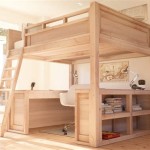When to Transition From Crib Into Bed
Transitioning from a crib to a bed is a significant milestone in a child's development. It marks a shift towards greater independence, self-reliance, and a sense of growing up. The decision of when to make this transition is largely dependent on the child's maturity, physical abilities, and individual readiness. While there is no one-size-fits-all answer, a combination of factors can guide parents in determining the appropriate time.
Physical Development and Safety
One of the primary considerations is a child's physical development and ability to safely navigate a bed. Typically, children around the age of 18 months to two years old begin to show signs of readiness. They may be able to climb in and out of the crib, stand independently, and have a better understanding of their surroundings. However, it is important to assess their physical abilities, such as climbing, balancing, and coordination. If they are not yet stable on their feet or have trouble navigating stairs, transitioning to a bed could pose a safety risk.
The transition should be considered when the child is physically capable of getting in and out of bed without assistance. Parents should ensure that the chosen bed is appropriately sized for the child's height and weight, and that there are no safety hazards such as sharp edges or loose parts. A sturdy bed frame with a low mattress height is recommended, as this reduces the potential for falls. Installing bed rails can provide additional safety, especially during the initial transition period.
Behavioral and Emotional Readiness
Beyond physical development, a child's behavioral and emotional maturity plays a significant role in their readiness for a bed transition. This includes their sleep patterns, ability to self-soothe, and overall temperament. If a child consistently wakes up during the night and has difficulty falling back asleep, transitioning to a bed may make it harder for them to settle down. It is generally advisable to wait until a child has established relatively consistent sleep habits before making the switch.
Behavioral cues to look for include a child's willingness to engage in bedtime routines, their ability to stay in their crib for a reasonable amount of time, and their response to the idea of a big-kid bed. If they express excitement and eagerness about the transition, it could be an indication of readiness. However, if they show signs of anxiety, fear, or resistance, it is best to postpone the transition until they are more ready.
Environmental Factors
Environmental factors can also influence the timing of a bed transition. If a child's room is safe and secure, with appropriate lighting, temperature, and noise levels, it can foster a conducive environment for a successful transition. Parents should consider potential distractions, such as toys or electronic devices, that could interfere with sleep. It is essential to establish and maintain a consistent bedtime routine that signals the body's natural sleep-wake cycle.
Another important aspect is the availability of parental support and supervision. During the initial weeks after the transition, parents should be available to assist with getting into bed, comforting their child, and addressing any concerns. Providing reassurance and a sense of security can help ease the transition process.
Signs of Readiness
Here are some signs that a child may be ready for a bed transition: *
Climbing out of the crib:
If a child consistently climbs out of their crib, it may be a sign that they are ready for a larger space. *Expressing interest in a bed:
If a child expresses a desire for a "big-kid bed," it might be an indication of readiness. *Consistent sleep patterns:
Establishing a consistent sleep schedule and bedtime routine can signal readiness for a bed transition. *Self-soothing abilities:
A child's ability to self-soothe and fall back asleep independently is a positive sign. *Positive response to bedtime routine:
If a child actively participates in and enjoys bedtime routines, it may indicate readiness.Tips for Transitioning
Here are some tips to make the transition from crib to bed smoother: *
Prepare for the transition:
Introduce the new bed gradually, allowing the child to explore and become familiar with it. *Maintain consistency:
Keep the bedtime routine consistent, even after the transition. *Provide reassurance:
Offer comfort and reassurance to help the child feel secure and safe in their new bed. *Be patient and understanding:
The transition may take some time, so be patient and supportive. *Avoid excessive anxiety:
Avoid displaying anxiety or stress about the transition, as this can transfer to the child. *Celebrate success:
Acknowledge and celebrate the child's progress to reinforce positive behavior.
When To Transition From A Crib Toddler Bed

How To Move Your Child From Crib Toddler Bed Safely

Transitioning Your Toddler From Crib To Bed 2024 Lucie S List

Transitioning Toddler From Crib To Bed Everything You Need Know

How To Make The Toddler Bed Transition A Success Simply September

Transitioning Toddler From Crib To Bed Everything You Need Know

Moving Twins To Toddler Beds Ct Mommy Blog

10 Best Tips For Transitioning From Crib To Bed Busy Toddler

When Should Your Baby Make The Transition From Crib To Toddler Bed Parachute Blog

How To Transition Your Toddler A Floor Bed Outsidethetoybox







